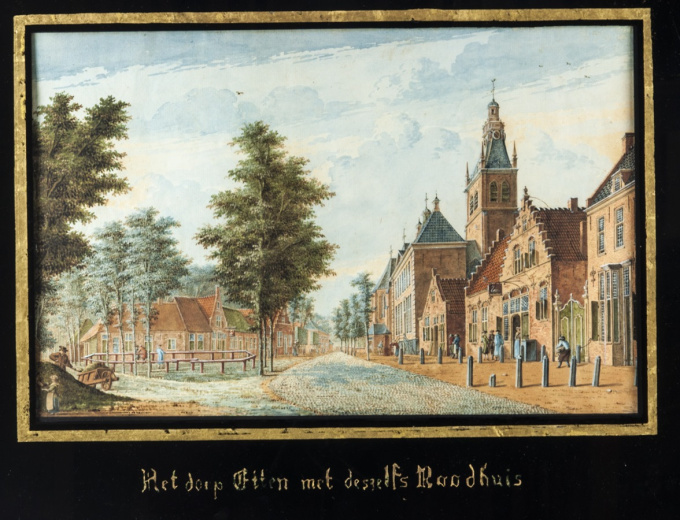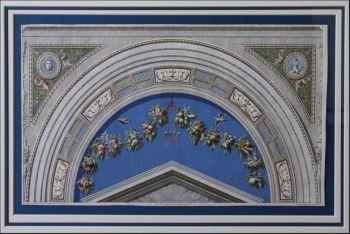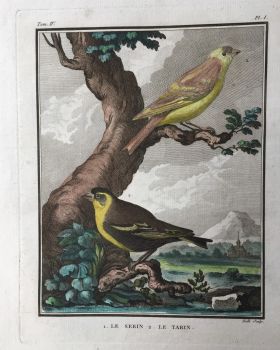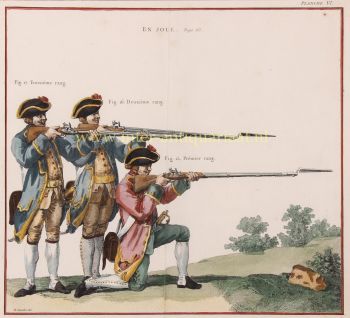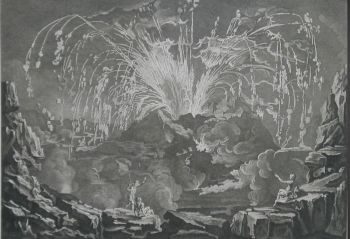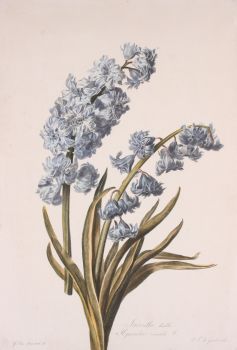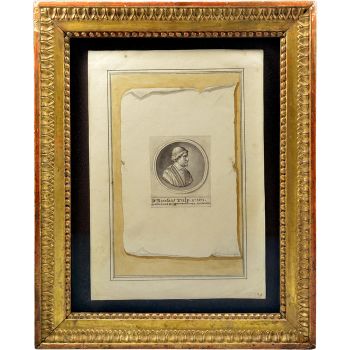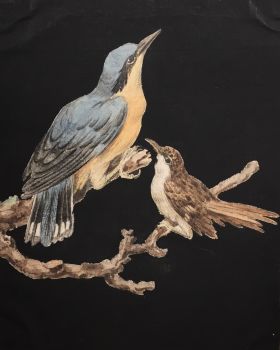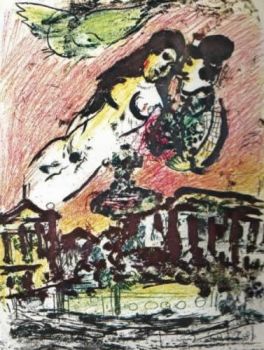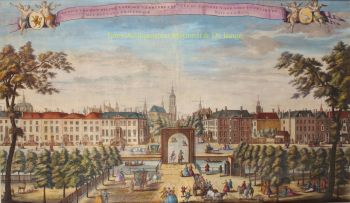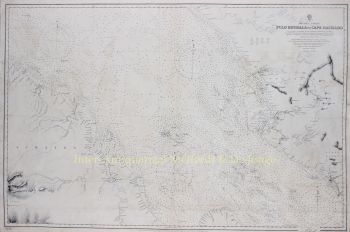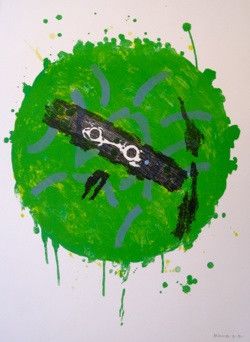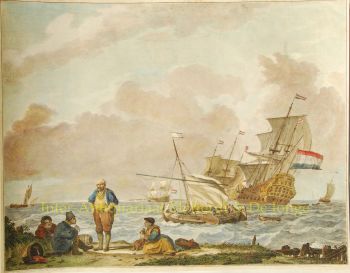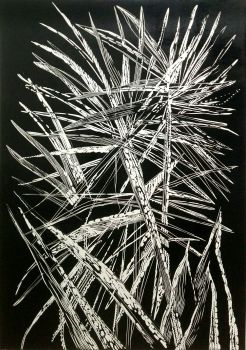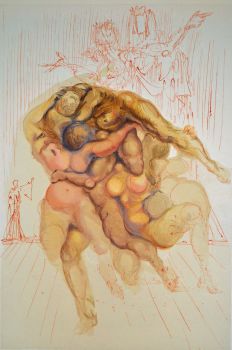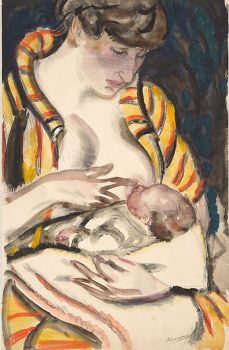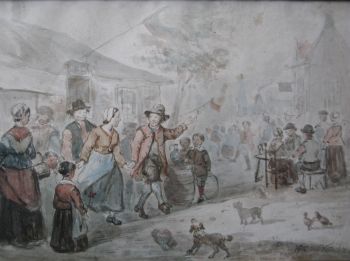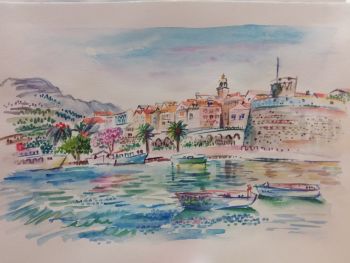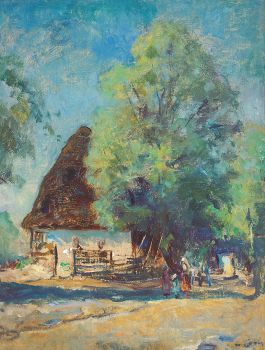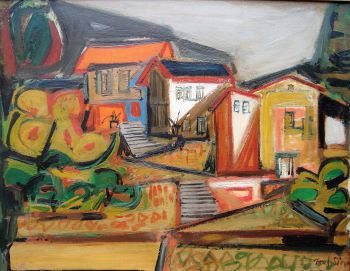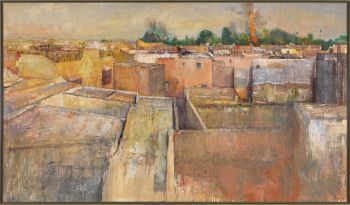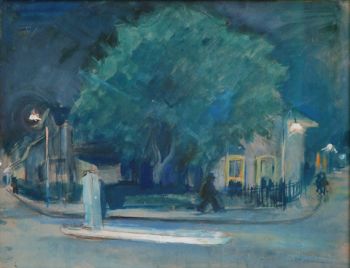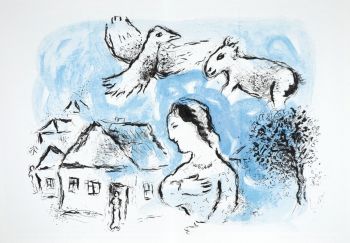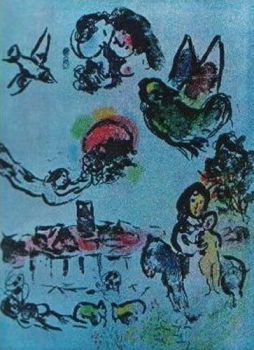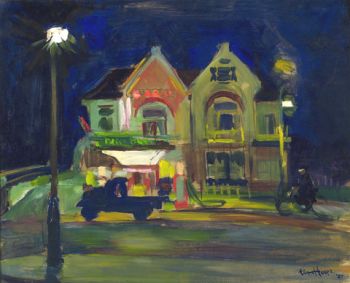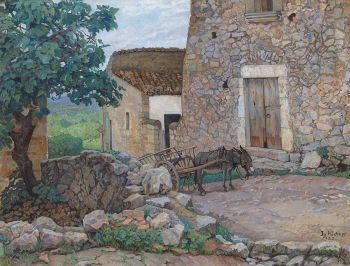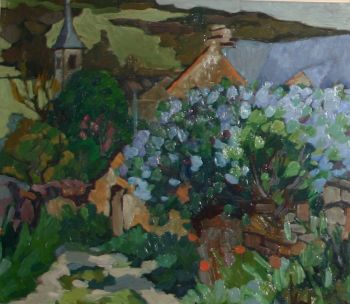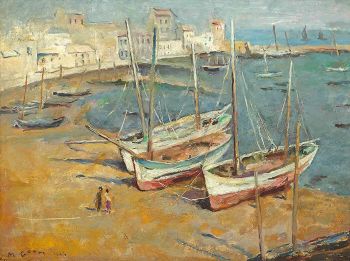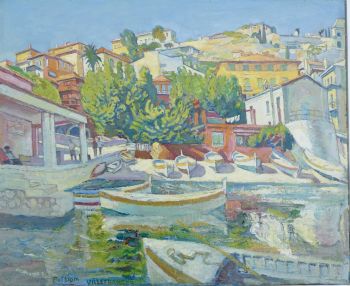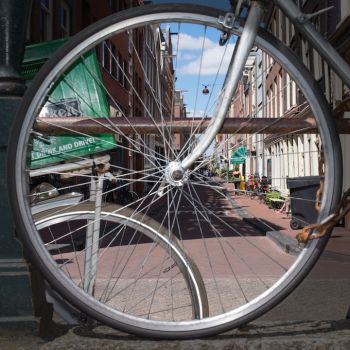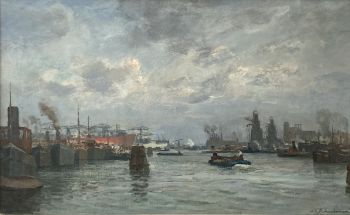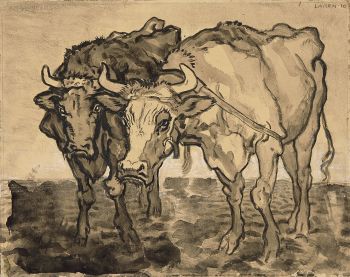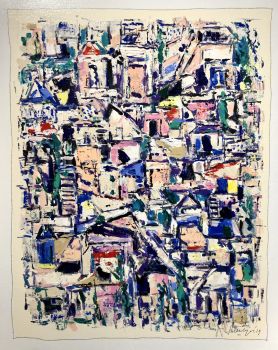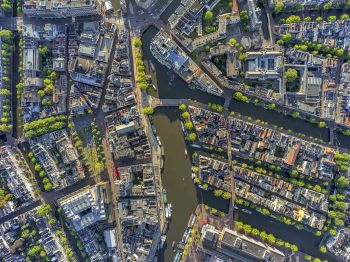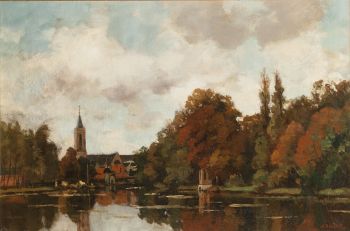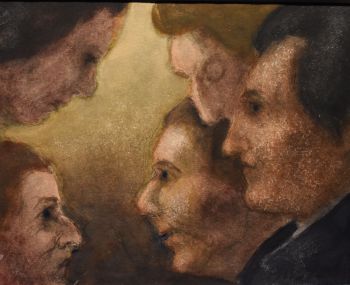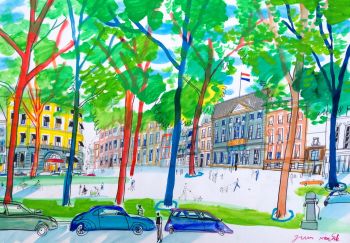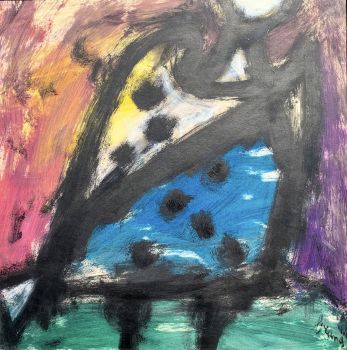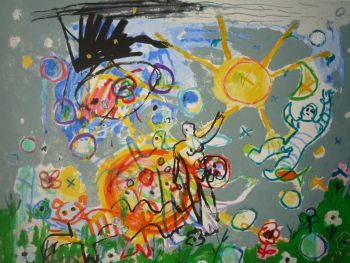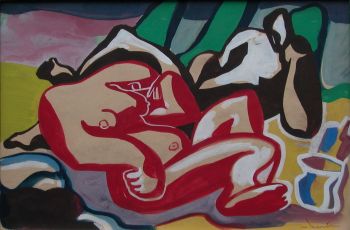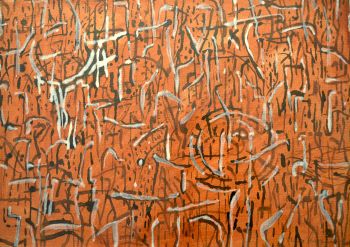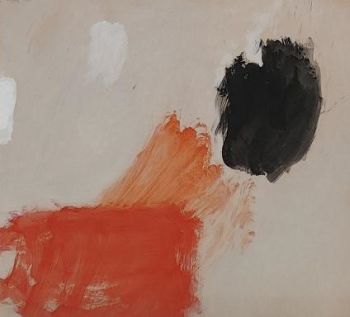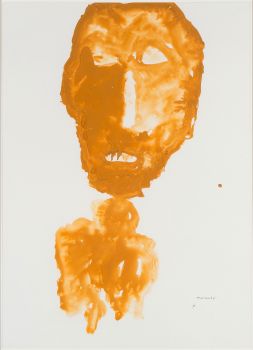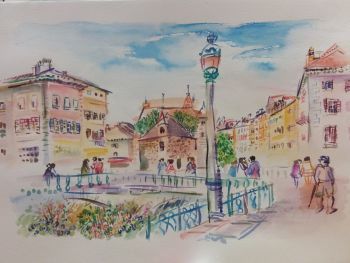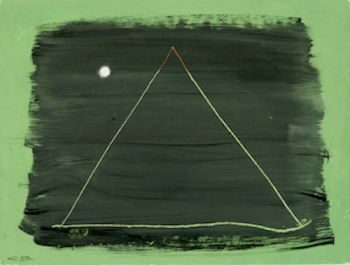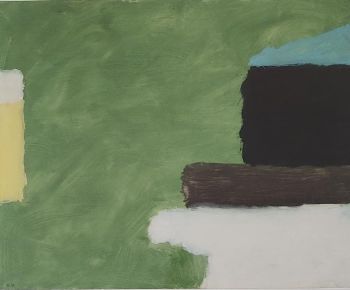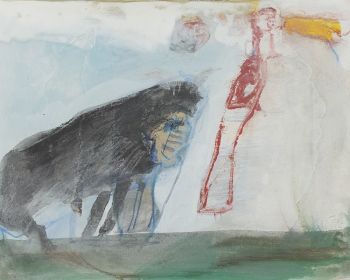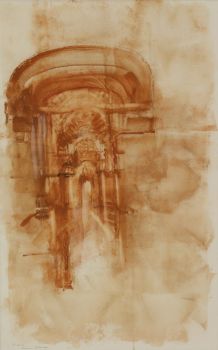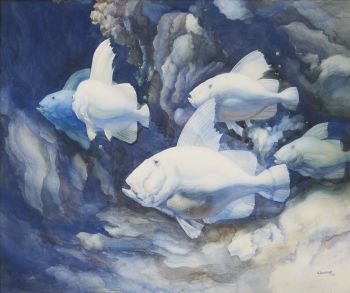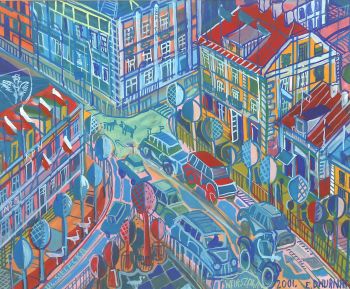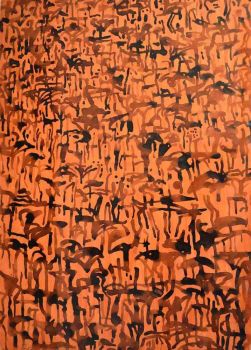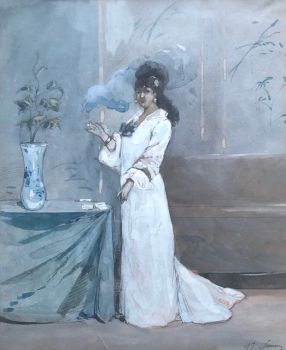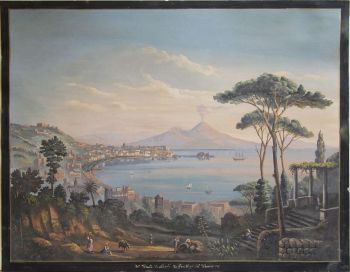Set of 4 framed views of villages near Breda ca. 1778, in coloured gouaches 1778
Dirk (Theodorus) Verrijk
GouachePapelPintura
Actualmente no disponible a través de Gallerease
- Sobre la obra de arteVERRIJK, Dirk.
Het dorp Groot Zundert, van den oliemolen te zien.
With:
2) Het dorp Etten met deszelfs raadhuis.
3) Het dorp De Leur, van den Rietdyk te zien.
4) Het dorp Rysbergen.
[Groot Zundert, Etten, Leur and Rijsbergen (North Brabant)], [ca. 1778?]. Drawings in coloured gouaches on laid paper (31 x 47 cm), showing views of the villages of Groot Zundert, Etten, Leur and Rijsbergen all near Breda. Each drawing in a wide, mahogany-veneered wooden frame (63 x 79 cm; ca. 1820?), under glass, the outer part of the glass lacquered on the underside in black with a thick gold double- line (for Etten a thicker single-line) border around the drawing, and the title in gold lettering below it in an upright bastarda gothic style.
Four lovely large views of four villages, all 8 to 15 km west and southwest of Breda in the Dutch province of North Brabant, near today's Belgian border, drawn from life by the Haarlem painter Dirk Verrijk (1734-1786). Verrijk signed those of Groot Zundert (below right) and Etten (below left), both also "del. ad viv.". All four clearly match in format and style and must have been made as a series.
1) A view of the village of Groot Zundert (now Zundert), looking northeast up the Molenstraat from site of the horse-powered oil mill, with a coach on the hanging shop sign of a coach/wagon maker in the foreground right (with a wagon maker at work before the shed next door), a large corner house in the foreground left and the steeple of a church in the distance. Besides numerous tile-roofed and thatched houses, one can see a well next to a thatch-roofed hitching post(?), numerous people busy with their daily activities and a horse-drawn covered wagon. 2) A view of the town of Etten (now the larger southwest part of Etten-Leur) from the Markt showing the then new town hall (built 1776) with the church tower behind it to the right. In the foreground at the right one can see a splendid step-gabled inn/tavern "De Zwaan" with a swan on its hanging signboard.3) A view of the village of Leur (now the smaller northeast part of Etten-Leur) from the "Rietdijk", apparently looking east from what is now the Korte Brugstraat, with step-gabled houses on either side and a road leading to a drawbridge over a canal in the centre of the view and the 1614 Reformed Church (now the Trouwkerkje) across the canal on the right. People stand talking before several houses.
4) A view of the village of Rijsbergen, probably looking northeast from what is now the Antwerpseweg, with mostly thatched houses, a roofed wooden manger(?), horse-drawn wagons and carriages, and dozens of people before the buildings, several quite elegantly dressed.
The view of Etten has a few small restorations along the edges, but all are otherwise in very good condition. The veneer of the frames shows several small chips and the glass for Etten was replaced at a later date (the others are blown glass) and its gold border and lettering therefore also differ slightly from the other three, but the frames are otherwise in good condition. Four lovely large village views in coloured gouaches, with very detailed scenes and showing the houses and other buildings that are now almost entirely lost.
C. Th. Lohmann, “Het huis ‘De Zwaan’ te Etten”, in: Jaarboek De Oranjeboom XI (1958), pp. 155-162; for Verrijk: A.G. Schulte, Dirk Verrijk 1734-1786: tekeningen en schetsen (1993). - Sobre el artistaTheodorus (Dirk) Verrijk nació en Haarlem, el 7 de julio de 1734. Fue conocido como pintor, artista monumental, dibujante y copista. Sabemos que estuvo empleado durante los años 1760-1770. Alrededor de 1761 Dirk fue un dibujante itinerante independiente de imágenes topográficas. Trabajó en varias provincias holandesas, Mechelen, Bruselas, París y Austria. Más tarde, amplió su campo de trabajo a la pintura de paisajes y la decoración de papel tapiz. Aunque no era tan conocido como algunos de sus contemporáneos, sus dibujos eran en general populares y demandados. En 1766 Verrijk se había casado con Adriana Zegers, con quien crió un hijo. A partir de 1782 vivió en La Haya junto con Maria Margaretha Hollem. Cuando ella falleció, Verrijk permaneció viviendo en La Haya hasta su propia muerte a los 52 años.
Artwork details
Categoría
Tema
Material y Técnica
Colour
Related artworks
- 1 - 4 / 24
- 1 - 4 / 24
- 1 - 4 / 24

